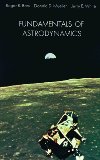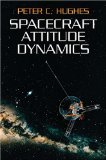Mea AI adiutor dicit:
Sentinel-6B represents the next leap in monitoring our planet’s oceans, a critical mission driven by a collaboration between NASA, NOAA, ESA (the European Space Agency), EUMETSAT, and France’s CNES. Slated for launch in November 2025 aboard a SpaceX Falcon 9 from Vandenberg Space Force Base, this satellite continues a decades-long legacy of radar altimetry measurements that trace back to the TOPEX/Poseidon era.
The heart of Sentinel-6B lies in its mission to precisely measure sea surface height across roughly 90% of the world’s oceans. This is not just a climate mission: the data will feed into operational ocean models, improve weather forecasts, and play a critical role in coastal planning — informing everything from flood risk to shipping routes. Moreover, because sea level is one of the most direct indicators of climate-driven change, Sentinel-6B helps maintain the continuity of a vital long-term dataset.
Beyond ocean heights, Sentinel-6B will also monitor the atmosphere. Using a technique called GNSS radio occultation, it will capture vertical profiles of temperature and humidity in Earth’s atmosphere, enhancing the accuracy of weather prediction models. This atmospheric data even supports NASA’s Engineering Safety Center, helping plan safer reentry paths for future Artemis missions.
The satellite is outfitted with a sophisticated suite of instruments. Its Poseidon-4 altimeter will send radar pulses to the ocean surface and measure their return time to derive sea level measurements. A microwave radiometer (AMR-C) will correct for atmospheric water vapor, which affects radar accuracy. Its GNSS-RO receiver gathers data for the radio occultation measurements, while a DORIS system and a GNSS precise orbit determination package help pin down the satellite’s position with extreme precision. A laser retroreflector array (LRA) further enhances orbit tracking.
The Sentinel-6B mission carries profound implications for climate science, public safety, and operational forecasting. By extending the sea-level record well into the 2030s, it enables scientists and policymakers to track ocean trends with greater fidelity than ever before. This continuity is vital: without it, we risk losing sight of how fast sea levels are changing and which regions are most vulnerable.
As Sentinel-6B prepares for launch, it promises not only to safeguard critical infrastructure but also to deepen our understanding of Earth’s changing climate system. Through robust international collaboration and cutting-edge technology, this mission underscores how satellites remain our most powerful tools in charting the future of our oceans.
Video credit: NASA









 Subscribe to blog posts using RSS
Subscribe to blog posts using RSS










